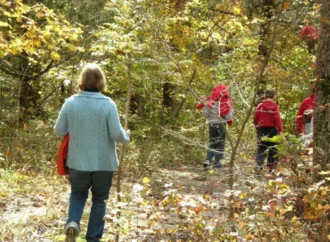America: Keep on waving.
Hello! Goodbye! Welcome! Miss you already! And even: This Zoom meeting has come to an end.
All of these deserve a wave, and we must resist the impulse to let the hand lie inert. For in truth, the wave keeps our humanity afloat.
“Waving is good on so many levels,” says Patti Wood, a researcher, author, consultant and speaker on body language. A hello wave opens people up, while a goodbye wave signals, “This visit was important to me—and so are you.” It’s a tiny effort that offers huge rewards socially, politically, and economically. We care, therefore we wave.
While its origins are murky, the wave has long been a way of signaling “I come in peace,” because a hand that is waving is not a hand that is holding a rock or spear or gun.
What’s more, it isn’t sneaky. A waving hand can be seen from far away; it exists to be seen. Even peripherally, it’s easy to catch a wave, in any of its forms.
For indeed, there are many wave variations, and we recognize them all. There’s the open palm wave, which almost everyone seems to do—except the Italians, who apparently use a closed palm (or minimally opening/closing palm, bivalve-like) to signal “Hi.”
For us open-palmers, the fingers can move side to side or up and down in unison, or they can wiggle separately (though this can look pathetically coy). The arm can swing far and wide—my preference—or stay close to the body. The hand can be flat or cupped, the latter known as the “Miss America wave.” For real! The cupped hand can move like an oscillating fan atop a static forearm, or the forearm itself can move like a metronome. This is not a great look.
But however it is you wave, you should know that what you’re doing is not trivial.
“People tend to wave from 300 feet away,” says Wood, who wrote Snap: Making the Most of First Impressions, Body Language, and Charisma. “Humans have distances where they approach to a point and then scope it out to see if it’s safe to get closer to this other human, and 300 feet is a stranger-danger assessment point.” There’s no real proof as to why 300 feet is so key, but Wood assumes it probably affords a person enough time to run away, or even go warn others to prepare.
Perhaps it’s no coincidence that a football field is 300 feet.
At 15 feet there’s another assessment point and ripe opportunity for a wave. And then there’s another at four to six feet. “You might have waved by now,” Wood says, “so you wouldn’t really have to wave again. But if you haven’t, this is it. You’ll do it now.” The open palm says, “I am safe. Let me come closer.” And if you’re the host, a wave says, “It is safe to approach.”
Whereupon, whatever you’ve come together to do—buy, sell, chat, work—can begin. The wave is so ingrained in our brains as a signal of connection, that even if you’re on Zoom, don’t worry about feeling dorky; wave hello. You’ll seem welcoming and in charge.
And that’s why you should also always wave goodbye. “Leave-taking behavior is essential to maintain relationships, so we do all these little things to make sure the person knows that we care about them, and to stay connected,” says Wood. Personally, I wave goodbye till the person heading out is several states away.
Anecdotal evidence suggests that younger folks, raised on tech, haven’t fully embraced such old-fashioned goodbyes. Their “leave-taking behavior” strikes some as more abrupt.
But considering how little it takes to move your arm for a few seconds, and how much this can boost almost any relationship, my advice to you no matter what your age is this:
Long may you wave.
—
COPYRIGHT 2022 CREATORS.COM
Image Credit: Pexels
















Leave a Comment
Your email address will not be published. Required fields are marked with *